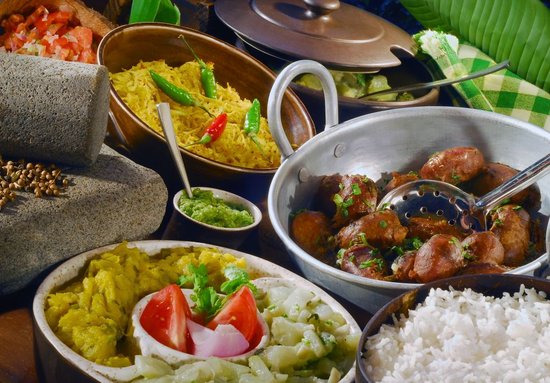During the 16th century, colonisation occurred, and it has led to the rise of Creole people in many countries. Creoles consist of ethnic groups of people who descend from different cultures, races and languages around the world. Each Creole culture is unique in their own way, and it is rich in diversity, especially when it comes to the various cuisines which it entails. Creole people are from different parts of the world, particularly in the Caribbean, in the Indian Ocean, in South America and even in the United States. The origin of creole cuisine varies depending on the history of the country or a region. Most of them are heavily influenced by West African countries.
Creole food is packed with flavours from all the spices and herbs that are used. It consists of charred vegetables and meat with heated seasonings and delicious tomato sauce bases that they incorporate in their different foods, and it is pretty enticing. Each cooking technique and style that are used come from various parts of the world. In Haiti, the food is influenced by their French, Spanish, Arab, and West African’s heritage. One of their most famous dishes is riz collé aux pois, also known as riz national, which consist mainly of rice, red kidney beans or pinto beans and traditional Haitian spices. Creole food around the world can be distinct by the culinary touch of their history and culture, even though they resemble.
As heated as the dishes may sound, creole food has so much simplicity to it. During colonial times, the British brought indentured labourers to the islands of Mauritius and Seychelles. The latter used ingredients that were accessible to them and easy to grow or cheap to buy. As follows, classic dishes like bouillon brède, which is a soup based with green leaves, or the satini came about. They are among the simplest and most efficient food in Mauritian and Seychellois’ cuisines. Moreover, just like in many other cultures, rice is a staple food in creole cuisine. Rice dishes are regularly consumed as it is a high source of carbohydrates, and it is inexpensive. It can be prepared in different ways. In the Mauritian culture, which is highly influenced by Indian cuisine, rice is used to make dishes like briani and as a side dish to other vegetables and meat, or sweets like kheer. In Louisiana Creole Cuisine, they have the Dirty Rice, traditionally made with white rice, chicken liver or ground meat and chopped vegetables. Thus, with simple ingredients like moringa leaves, cassava, chayote, among others, Creole people prepare delicious dishes that sustain them throughout the day.
Nonetheless, there are a lot of dishes in Creole cuisine that have a dark history. During the period of slavery, there was the creation of a lot of creole dishes. During the colonial era, in countries like Jamaica and Haiti, the plantation owners would take the meaty part of animals like cattle, cow, and chicken, and they would leave the undesirable parts to the African slaves. Ergo, many dishes such as oxtail stew, cow foot stew, chicken feet soup were created, as the poor people would find ways to sustain themselves with whatever meat was available to them. Nowadays, these dishes are considered delicacies in many societies.
Today, globalisation has led to the deracination of many traditional dishes. Food cultures around the world have been diffused with fast food, and heavily influenced by Western food culture. Transnational corporations’ (TNCs) aim to bring global dominance, do not leave many options for local food to be preserved. In most traditional societies, fast food chains like McDonald’s have already become part of the daily routine of local people. The preparation of authentic creole food has become an occurrence in many creole households. Many traditional dishes have been toned down and crossed with food from western countries, to cater to the taste of tourists, especially in destinations, such as Mauritius and Seychelles. Is that a good thing or a bad thing? Only time will tell.




